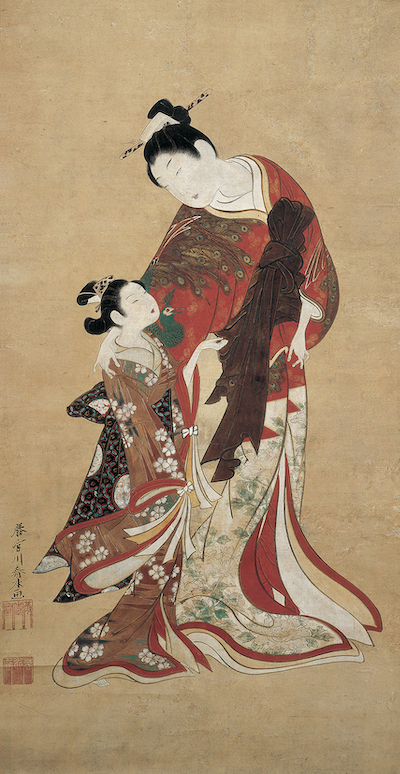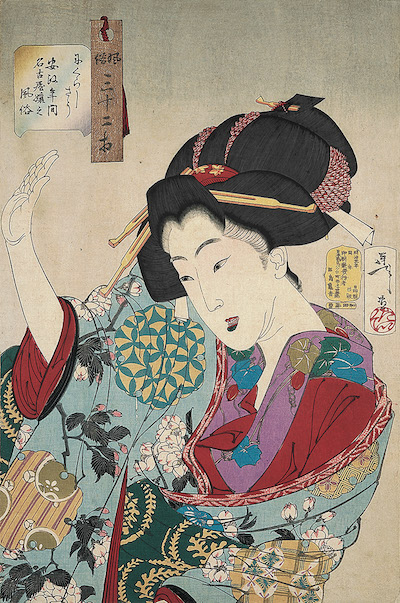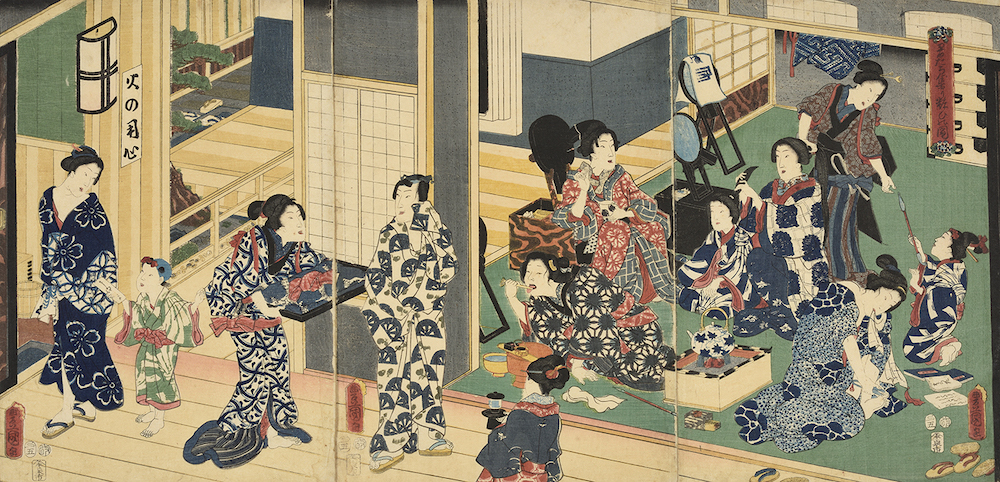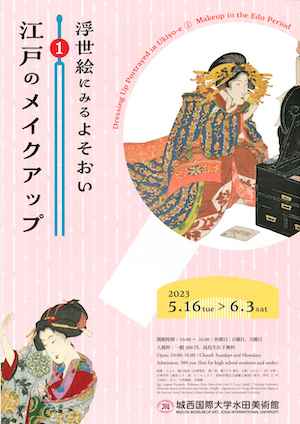
The Edo period saw a flourishing of the culture of dressing up. Women made fashion statements with their makeup, hairstyles, and kimono under the social convention that imposed dress restrictions according to marital status, social status, and age. As a result, a variety of fashions emerged. Bijin-ga (beautiful woman paintings and prints) were quick to incorporate the latest social mores of the era, providing contemporary audiences with a valuable source of information on the fashions of the time. The first in a series of exhibitions entitled “Dressing Up Portrayed in Ukiyo-e” showcases hair and makeup.
White skin was regarded as the ideal. The three main colors used in makeup were white for face powder, red for rouge, and black for ohaguro (blackening the teeth) and eyebrows. Keppatsu coiffure became the dominant trend for women and a succession of new hairstyle fashions followed, mainly favored by the merchant class. Apparently, there were several hundred different hairstyles. This exhibition showcases the variety and evolution of makeup and hairstyles through bijin-ga produced from the mid-Edo period to the Meiji era. Also displayed are mirror stands, makeup implements, combs, and ornamental hairpins from the period, kindly supplied by Beni Museum. Admire the variety and beauty of makeup from the Edo period.




top:Utagawa Kunisada, Yoshiwara Clock: Hour of the Cock (5-7 p.m.)
left:Miyagawa Shunsui, Courtesan and Attendant
right:Tsukioka Yoshitoshi, Thirty-two Aspects of Manners and Customs:
Hateful – Appearance of a Young Woman from Nagoya in the Ansei era
under:Utagawa Toyokuni III, Courtesans Applying Makeup
the above, Mizuta Museum of Art, Josai International University


